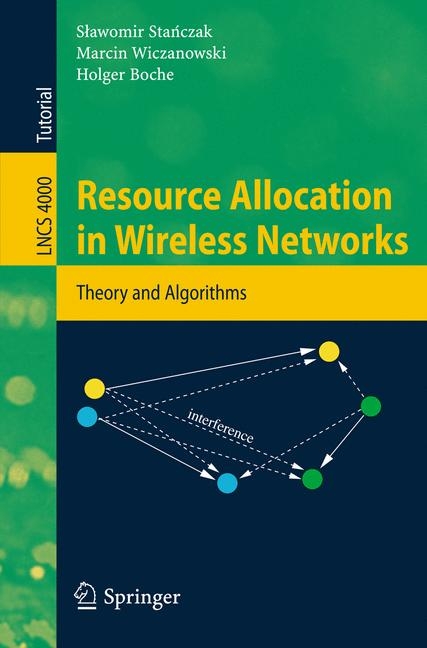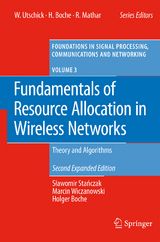
Resource Allocation in Wireless Networks
Theory and Algorithms
Seiten
2006
|
1., Ed.
Springer Berlin
978-3-540-46248-4 (ISBN)
Springer Berlin
978-3-540-46248-4 (ISBN)
- Titel erscheint in neuer Auflage
- Artikel merken
Zu diesem Artikel existiert eine Nachauflage
The wireless industry is in the midst of a fundamental shift from providing voice-only services to offering customers an array of multimedia services, including a wide variety of audio, video and data communications capabilities. Future wireless networks will be integrated into every aspect of daily life, and therefore could affect our life in a magnitude similar to that of the Internet and cellular phones.
This monograph demonstrates that these emerging applications and directions require fundamental understanding on how to design and control wireless networks that lies far beyond what the currently existing theory can provide. It is shown that mathematics is the key technology to cope with central technical problems in the design of wireless networks since the complexity of the problem simply precludes the use of engineering common sense alone to identify good solutions.
The main objective of this book is to provide tools for better understanding the fundamental tradeoffs and interdependencies in wireless networks, with the goal of designing resource allocation strategies that exploit these interdependencies to achieve significant performance gains. The book consists of three largely independent parts: theory, applications and appendices. The latter contain foundational apects to make the book more understandable to readers who are not familiar with some basic concepts and results from linear algebra and convex analysis.
This monograph demonstrates that these emerging applications and directions require fundamental understanding on how to design and control wireless networks that lies far beyond what the currently existing theory can provide. It is shown that mathematics is the key technology to cope with central technical problems in the design of wireless networks since the complexity of the problem simply precludes the use of engineering common sense alone to identify good solutions.
The main objective of this book is to provide tools for better understanding the fundamental tradeoffs and interdependencies in wireless networks, with the goal of designing resource allocation strategies that exploit these interdependencies to achieve significant performance gains. The book consists of three largely independent parts: theory, applications and appendices. The latter contain foundational apects to make the book more understandable to readers who are not familiar with some basic concepts and results from linear algebra and convex analysis.
| Reihe/Serie | Lecture Notes in Computer Science ; 4000 |
|---|---|
| Verlagsort | Berlin |
| Sprache | englisch |
| Maße | 155 x 235 mm |
| Gewicht | 318 g |
| Einbandart | Paperback |
| Themenwelt | Mathematik / Informatik ► Informatik ► Netzwerke |
| Technik ► Nachrichtentechnik | |
| Schlagworte | Algorithmics • algorithms • Communication • communication complexity • Complexity • Computational Discrete Mathematics • Convex Analysis |
| ISBN-10 | 3-540-46248-1 / 3540462481 |
| ISBN-13 | 978-3-540-46248-4 / 9783540462484 |
| Zustand | Neuware |
| Informationen gemäß Produktsicherheitsverordnung (GPSR) | |
| Haben Sie eine Frage zum Produkt? |
